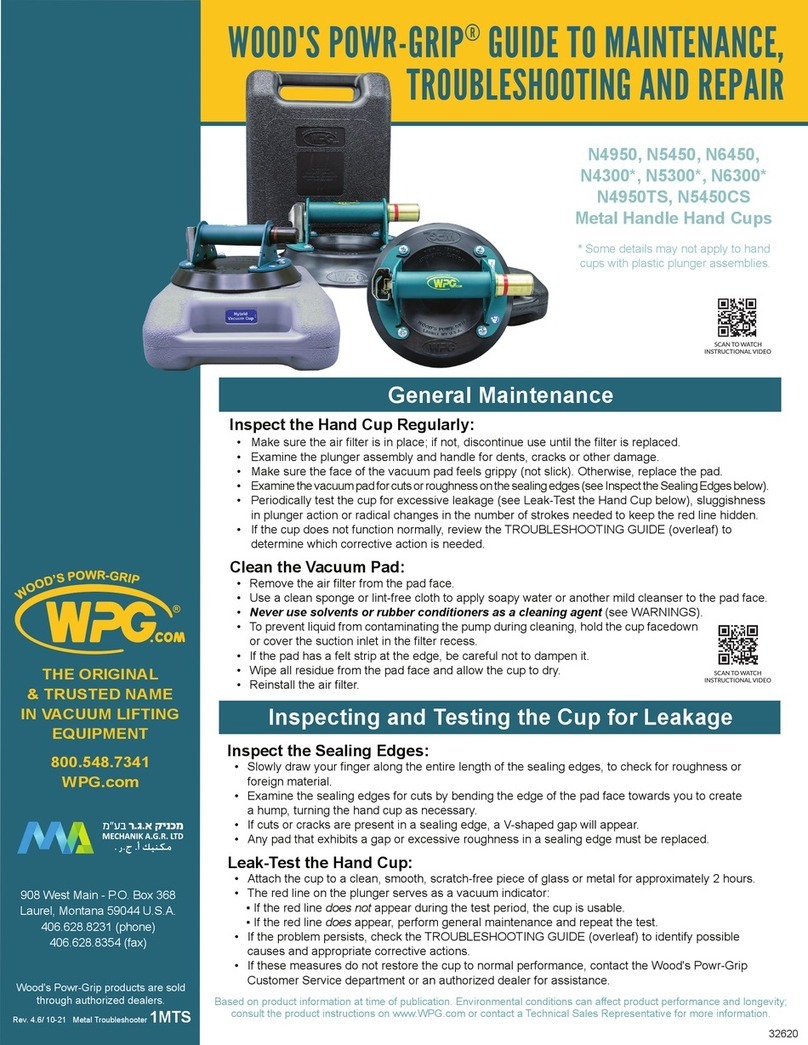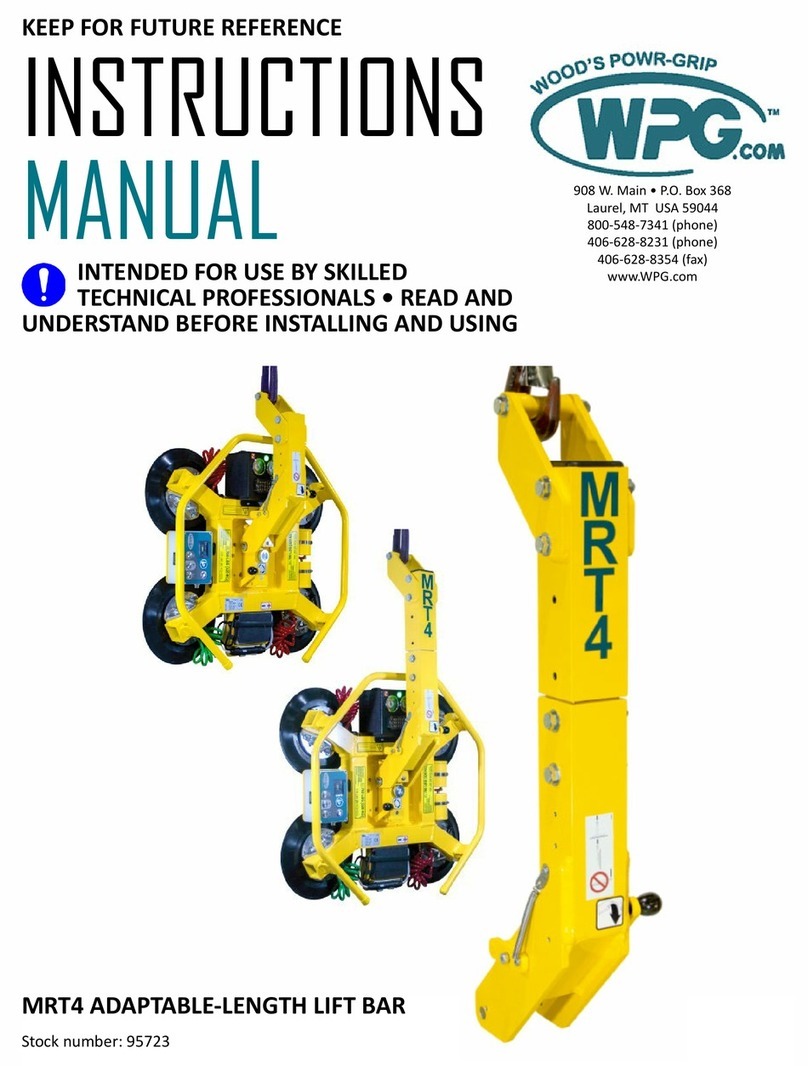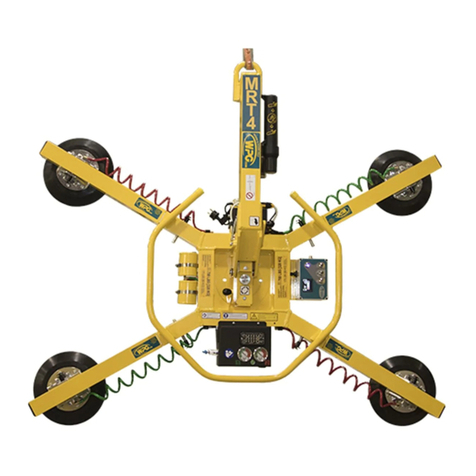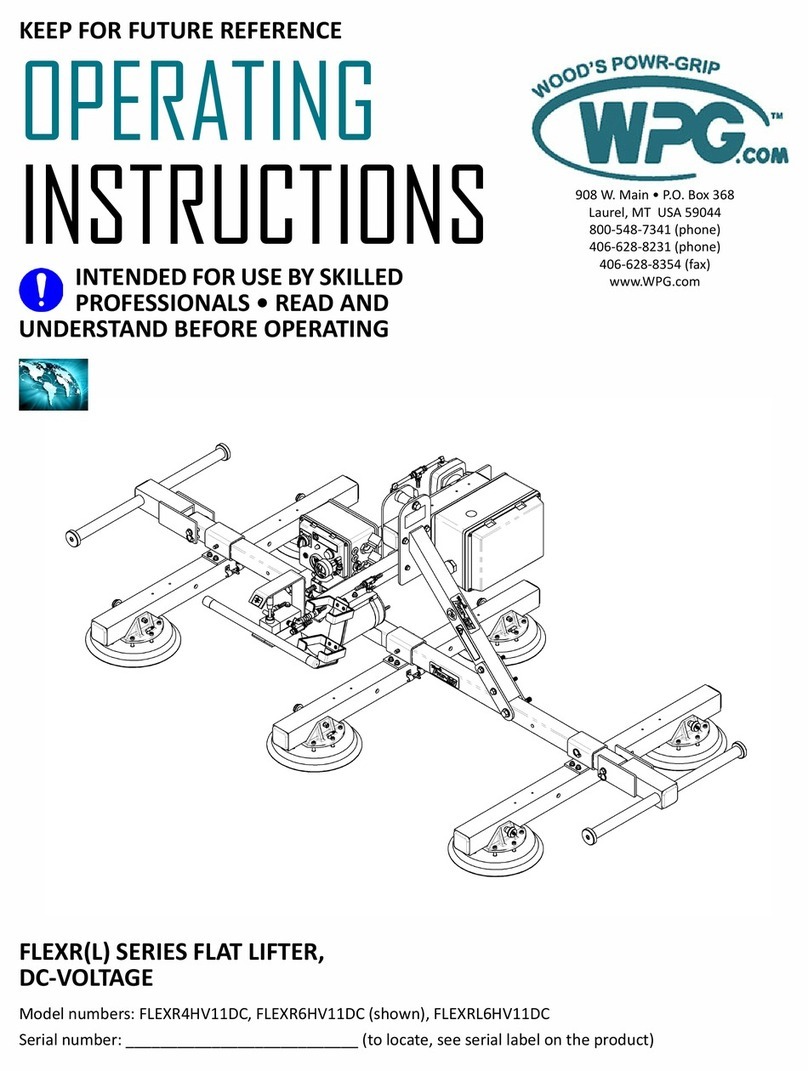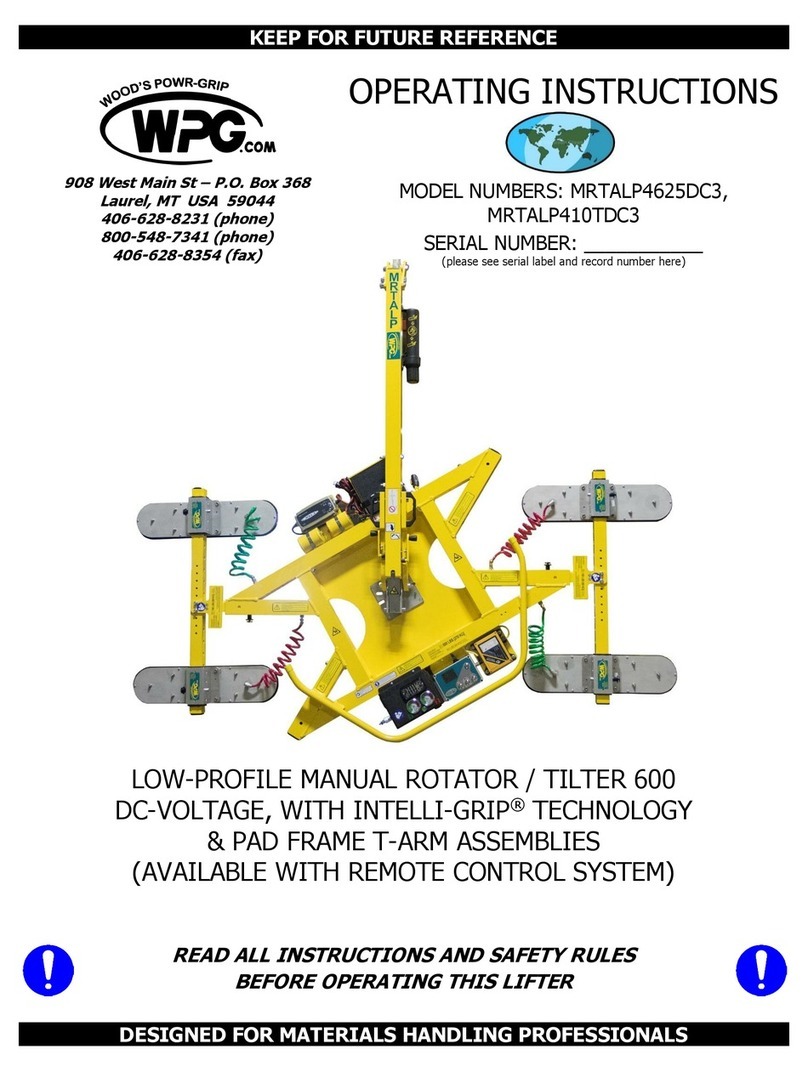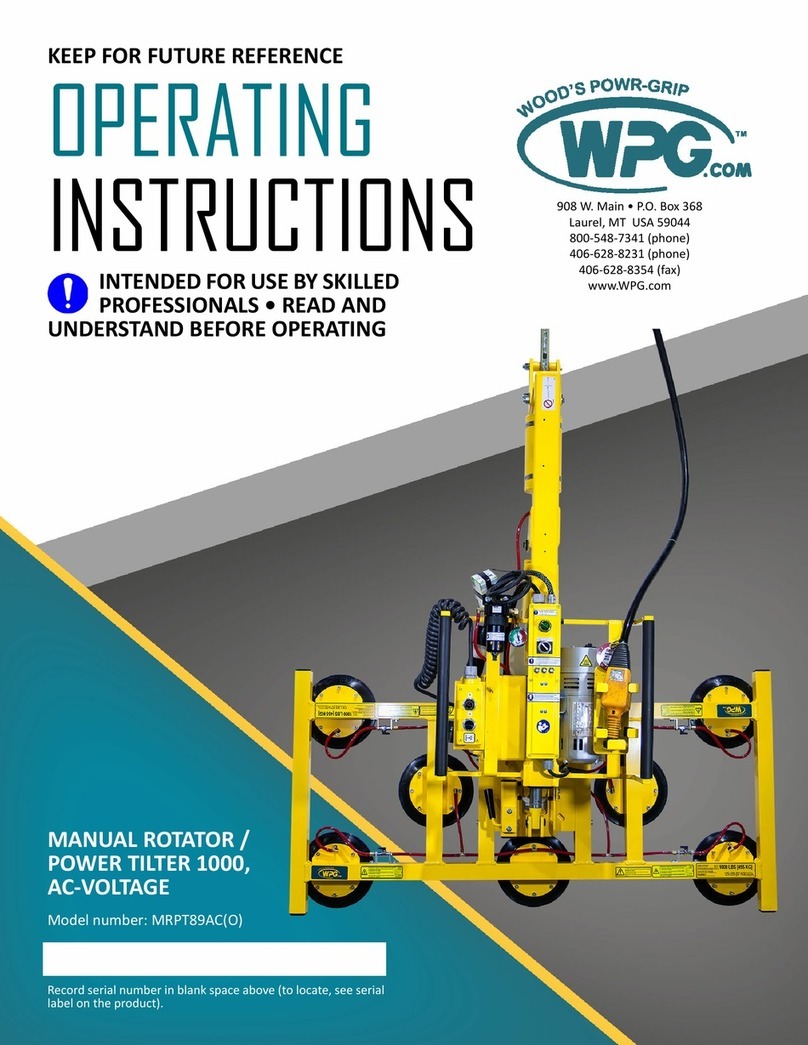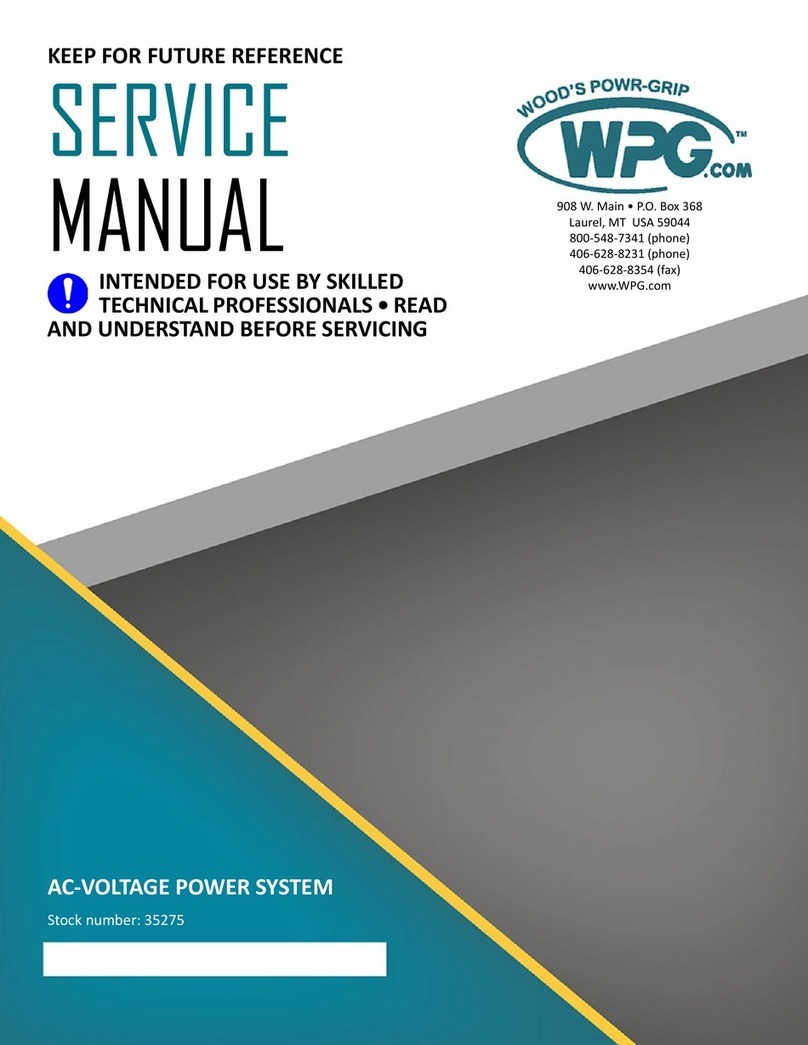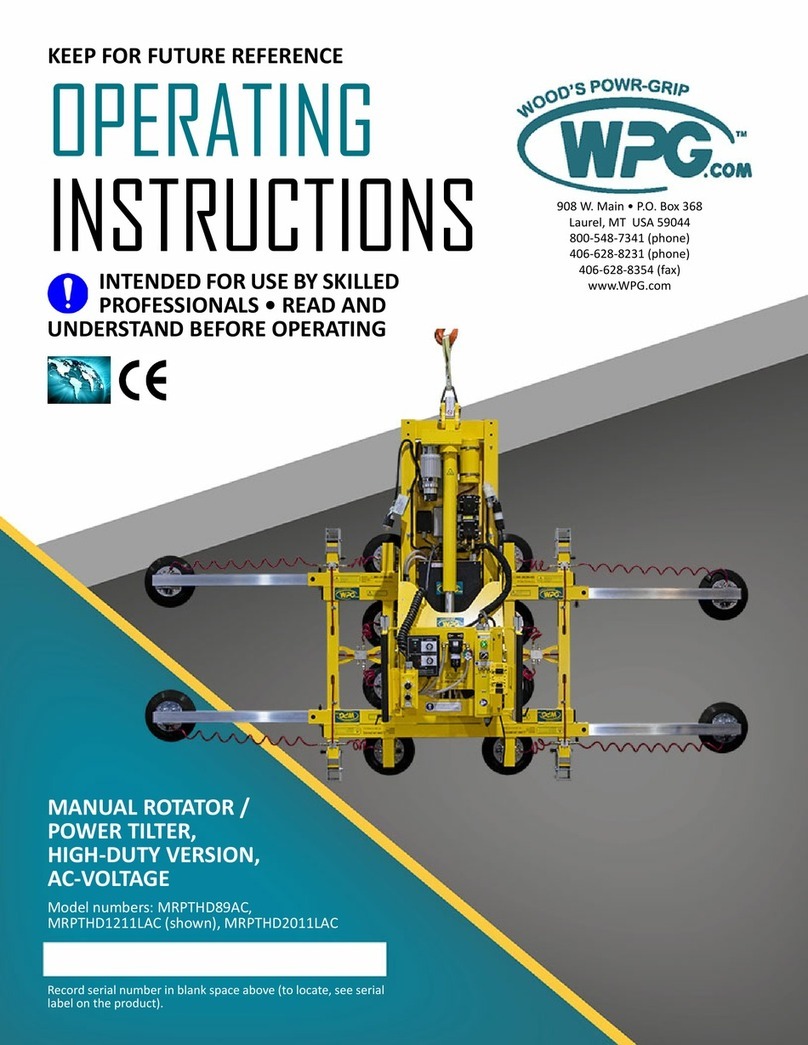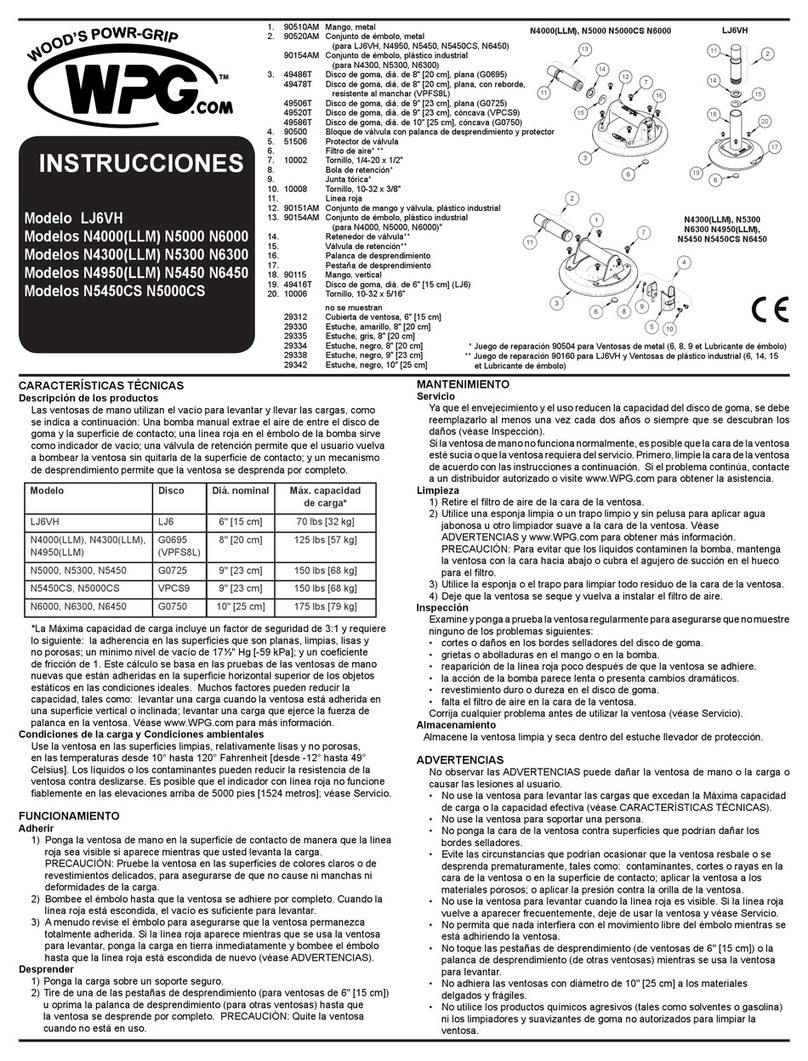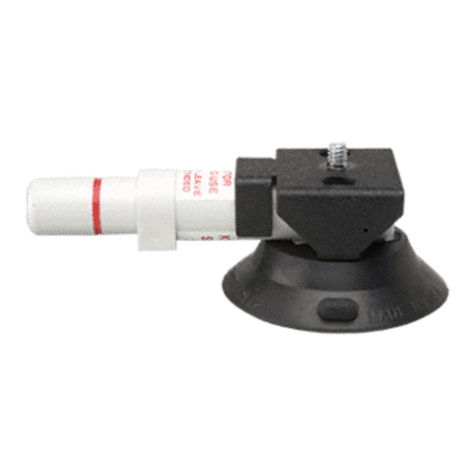
Product
Description
Designed for use with hoisting equipment, MRTALPCH6-DC3 lifters support loads using vacuum and
manipulate loads using manual 180° rotation and mechanically assisted, manual 90° tilt motions.
Model
Number MRTALPCH611LDC3 MRTALPCH610LDC3O MRTALPCH610CDC3O
Vacuum Pads
(6 each, standard rubber1
1...... Available with other rubber compounds for special purposes (see www.WPG.com).
)
11" [28 cm] nom. diameter,
lipped (Model G3370)
10" [25 cm] nom. diameter,
lipped (Model HV11)
10" [25 cm] nom. diameter, con-
cave (Model G0750)
Pad Spread ---------------------------- (to outer edges) ----------------------------
Maximum 79¼" x 12" [201 cm x 30 cm] 78¼" x 11" [199 cm x 28 cm] 77¼" x 10" [196 cm x 25 cm]
Minimum 53¾" x 12" [137 cm x 30 cm] 52¾" x 11" [134 cm x 28 cm] 51¾" x 10" [131 cm x 25 cm]
Maximum
Load Capacity2
2...... The Maximum Load Capacity is rated at a vacuum of 18 Hg [-60 kPa] on clean, smooth, nonporous flat surfaces with a friction coefficient of 1. Pad
compound, load rigidity, strength, surface conditions, overhang, angle, center of gravity and temperature can also affect the lifting capacity. A qualified
person should evaluate the effective lifting capacity for each use (see definition under “Rated Load Test” on page 33).
Per-Pad 184 lbs [83.5 kg] 150 lbs [68.5 kg] 150 lbs [68.5 kg]
Total with 4 Pads 700 lbs [320 kg] 600 lbs [270 kg] 600 lbs [270 kg]
Total with 6 Pads 1,100 lbs [500 kg] 900 lbs [410 kg] 900 lbs [410 kg]
Lifter
Weight 130 lbs [59 kg]
Power
System 12 volts DC, 4.5 amps
Battery
Capacity 7 amp-hours
Rotation
Capability Manual, 180°, with latching at each ¼ turn (when required)
Tilt
Capability
Manual, 90°, with automatic latching in upright position and four-bar tilt linkage that provides mechanical
advantage
Product
Options
Available with Remote Control System – FCC, CE and ICC certified.
See separate instructions about other options.
Operating
Elevation Up to 4,500' [1,370 m]
Operating
Temperatures 32° — 104° F [0° — 40° C]
Service
Life 20,000 lifting cycles, when used and maintained as intended3
3...... Vacuum pads, filter elements and other wear-out items are excluded.
Software
Version Intelli-Grip®7.6
ASME Standard
BTH-1 Design Category "B", Service Class "0" (see www.WPG.com for more information)
Rev 1.0/12-19 MRTALPCH6-DC3(RC): #351253
!!–CE–!! This symbol appears only when a CE Standard is different from other applicable standards. CE requirements are
mandatory in the European Union, but may be optional elsewhere.
SPECIFICATIONS
